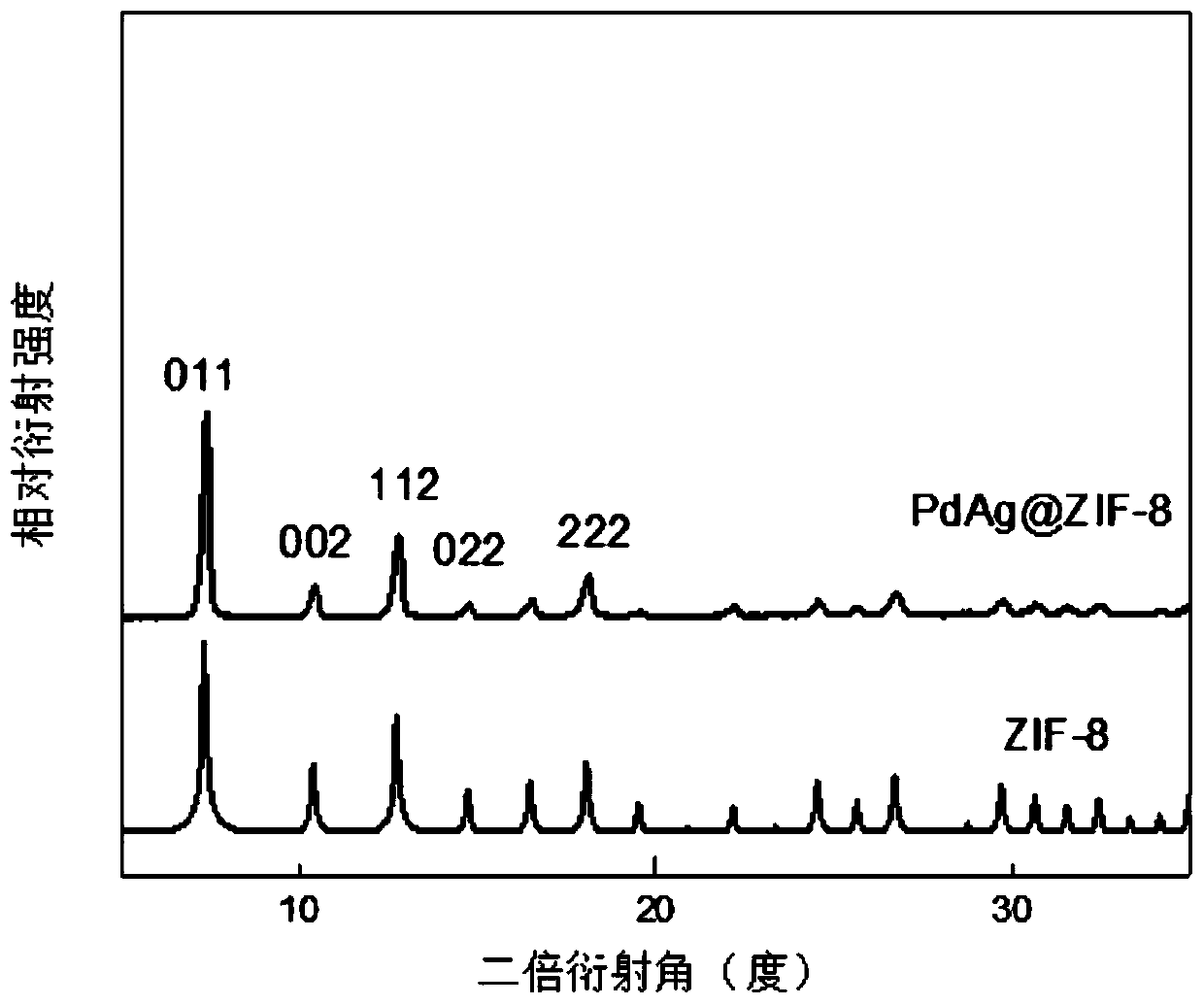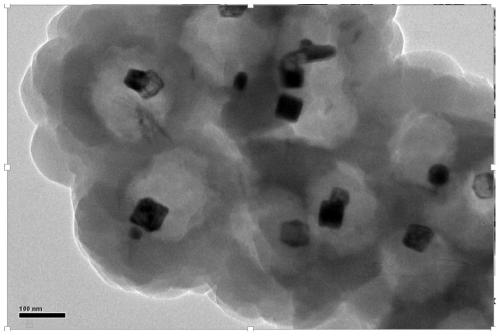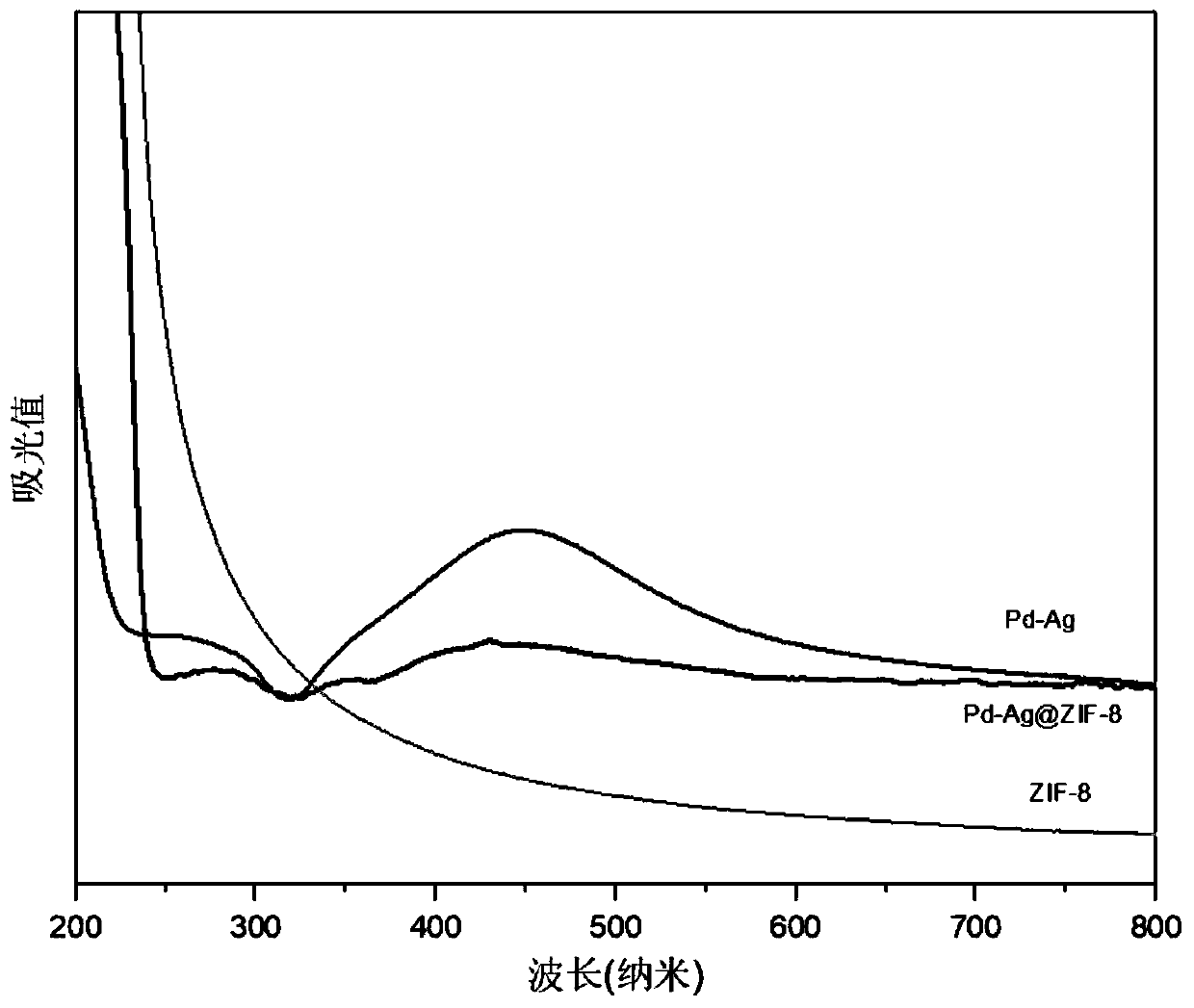Supported yolk-eggshell structure nano-catalyst and preparation method thereof
A nano-catalyst and supported technology, which is applied in the field of supported egg yolk-eggshell nano-catalysts and its preparation, can solve the problems of unfavorable environmental sustainable development, difficult nitro reduction, harsh reaction conditions, etc., and achieve high-efficiency catalytic activity and Reaction selectivity, good application prospects, mild reaction conditions
- Summary
- Abstract
- Description
- Claims
- Application Information
AI Technical Summary
Problems solved by technology
Method used
Image
Examples
preparation example Construction
[0026] The present invention also provides a method for preparing a loaded egg yolk-eggshell nanocatalyst, comprising: S1) mixing the double transition metal nanoparticles with the precursor solution of the template layer, growing the template layer, and obtaining the intermediate of the core-shell structure ; S2) mixing the intermediate of the core-shell structure with the precursor solution of the metal-organic framework to grow the metal-organic framework to obtain a second intermediate; S3) removing the template layer of the second intermediate by etching, The loaded egg yolk-eggshell structure nano catalyst is obtained.
[0027] The present invention has no special limitation on the sources of all raw materials, which can be commercially available.
[0028] Wherein, the double-transition metal nanoparticles and the metal-organic framework are the same as those described above, and will not be repeated here.
[0029] In the present invention, the double transition metal n...
Embodiment 1
[0040] 1.1 Preparation of Ag nanocubes
[0041] Add 50mL of ethylene glycol to a 250mL single-necked round bottom flask, preheat at 150°C for 20 minutes, then add 0.6mL of 3mM NaHS ethylene glycol solution, react for 4 minutes, then add 5mL of 3mM HCl and 12.5mL The ethylene glycol solution of PVP with a concentration of 20 mg / mL was heated for 2 minutes, and then 4 mL of a 282 mM silver trifluoroacetate solution in ethylene glycol was added and kept at 150° C. for 1 hour. After the reaction, the solution was rapidly cooled to room temperature, centrifuged, washed once with acetone, and washed three times with water to obtain Ag nanocubes.
[0042] 1.2 Preparation of PdAg bimetallic nanocages
[0043] Ultrasonically disperse 5.5 mg of Ag nanocubes in 50 mL of water, add 50 mg of PVP and stir to dissolve. After preheating at 90 °C for 20 minutes, add 10 mL of K 2 PdCl 4 The aqueous solution was added to the above solution at an injection speed of 0.25mL / min. After the injec...
Embodiment 2
[0054] Add 0.5 mM K in step 1.2 2 PdCl 4 The addition amount of the aqueous solution was increased to 25 mL, and other conditions were the same as in Example 1 to obtain a PdAg@ZIF-8 catalyst with a Pd content of 29.5 wt% in the PdAg bimetallic nanocage.
[0055] Table 1 is the conversion and selectivity of 29.5wt%PdAg@ZIF-8 prepared in this example for the catalytic reaction of p-nitrostyrene (reaction conditions and embodiment 1 Figure 4 The conditions of the catalyzed reaction of p-nitrostyrene are the same, and the molar weight of the metal loaded on the catalyst is the same as in Example 1). It can be seen from the results that due to the increase of Pd content, the catalyst still has a higher selectivity to aminostyrene, but the reducing ability of the catalyst is also enhanced, and the produced p-aminostyrene product is further hydrogenated, and the over-hydrogenated product is gradually increase.
PUM
 Login to View More
Login to View More Abstract
Description
Claims
Application Information
 Login to View More
Login to View More - R&D
- Intellectual Property
- Life Sciences
- Materials
- Tech Scout
- Unparalleled Data Quality
- Higher Quality Content
- 60% Fewer Hallucinations
Browse by: Latest US Patents, China's latest patents, Technical Efficacy Thesaurus, Application Domain, Technology Topic, Popular Technical Reports.
© 2025 PatSnap. All rights reserved.Legal|Privacy policy|Modern Slavery Act Transparency Statement|Sitemap|About US| Contact US: help@patsnap.com



